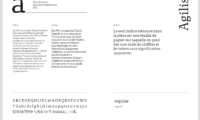The Noun Project – a crowdsourced library of icons available for free on the website NounProject.org – has partnered in 2011 with Code for America to offer “Iconathons” and “Icon Camps”. “Traveling through six U.S. cities, Noun Project founder Edward Boatman conducted daylong workshops bringing together designers, civic leaders, and city staffers to design new urban symbols”.
In a 2012 interview, Boatman explains:
Our Iconathons are a series of design workshops, and their goal is essentially to create civic-minded symbols for the public domain. What we do is run a group design workshop, where we invite designers, subject matter experts, and citizens who really care about their environment and their community. So we invite citizens into this process who have no design experience.
What’s great is that non-designers can really add value to this process. We keep the execution level just to pencil and paper. Keeping it to a pen and paper, it’s all about ideas. We design these symbols in a group, and we talk about which symbols best communicate certain concepts. Then after the event, I work with a series of graphic designers to take those sketches and turn them into vectors. With this process we’ve produced about 55 symbols to date.
Last year we held them Los Angeles, San Francisco, New York, Chicago, and Boston, and each Iconathon had a different theme. The Los Angeles one was food policy. The L.A. county food policy heads came to the Iconathon, and they really helped inform the process by telling us: This how the symbols could be used. This is why they’re powerful tools. This is how they help solve problems. They really helped inform the process.

Read a report by Kat Lau, intern at the San Francisco Office of Civic Innovation in 2012.
Also featured in Ellen Lupton’s “Type on Screen”:
In Baltimore a team of designers from MICA paired up with city leaders to create icons focusing on food, health and community.











